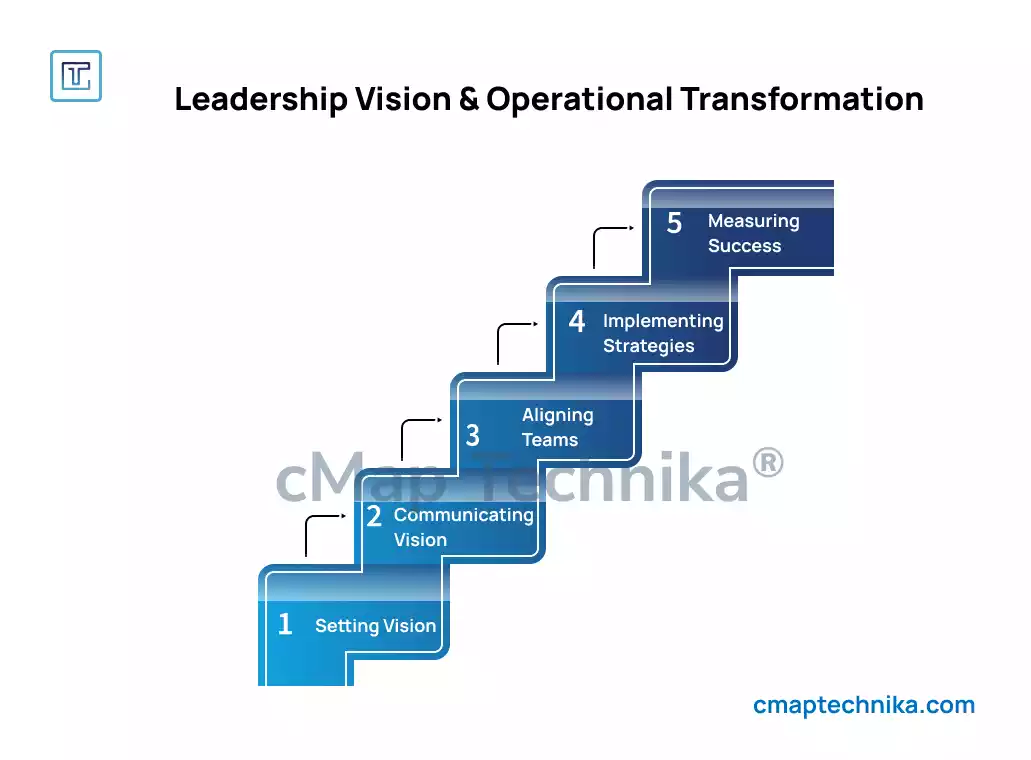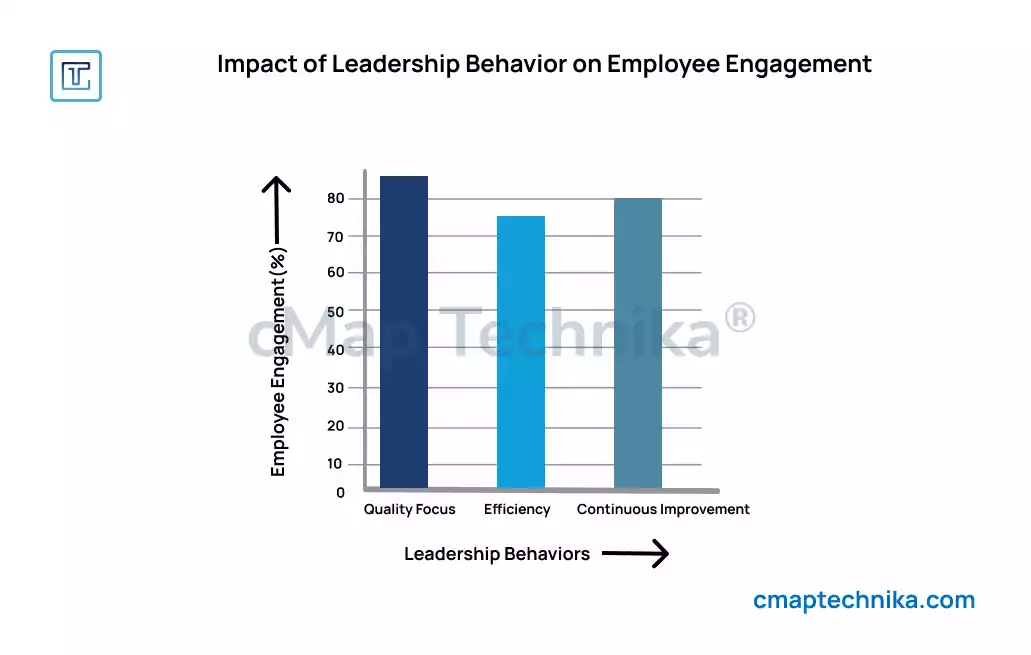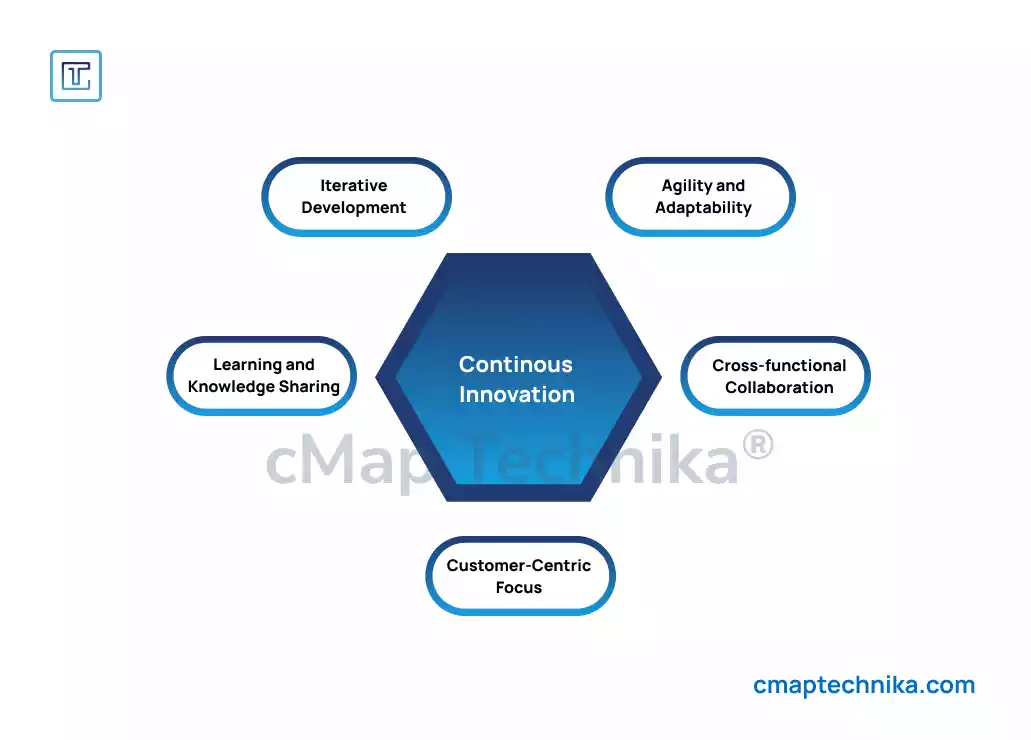Operational transformation is essential for organizations looking to stay competitive, efficient, and adaptable in an ever-evolving business environment. While many factors contribute to successful transformation, one of the most critical is leadership. Leaders play a pivotal role in guiding and inspiring change, fostering operational excellence, and ensuring that new processes and strategies are effectively implemented across all levels of the organization.
Effective leadership isn’t just about making high-level decisions—it’s about setting a clear vision, motivating teams, and supporting innovation at every level. Strong leaders create an environment where teams feel empowered to embrace change, experiment with new approaches, and drive continuous improvement. In this article, we’ll explore how leadership drives operational transformation and ensures long-term success.
Setting a Clear Vision for Transformation

Successful operational transformation begins with a clear and compelling vision. Leaders must articulate why change is necessary and what the desired outcomes will be. This vision provides direction, sets expectations, and aligns all stakeholders around a common goal.
Leaders should communicate the big picture while also highlighting the smaller, more immediate steps needed to get there. When teams understand how their individual contributions fit into the larger strategy, they’re more likely to feel motivated and engaged. A clear vision also helps to maintain focus, preventing the organization from losing sight of its objectives amid the complexities of change.
Leading by Example: Building a Culture of Excellence

Leadership sets the tone for the entire organization. If leaders are committed to operational excellence, it is more likely that employees at all levels will follow suit. Leaders must demonstrate the behaviors they expect from their teams, such as a focus on quality, efficiency, and continuous improvement.
By embodying the principles of operational excellence, leaders inspire a culture where employees are empowered to innovate, take initiative, and drive improvements. This leadership approach fosters trust, encourages collaboration, and drives collective accountability. When employees see their leaders embracing change, they’re more likely to feel confident in their ability to contribute to the transformation.
Empowering Teams and Promoting Collaboration
Effective leadership in operational transformation also involves empowering teams to take ownership of their work and collaborate across departments. Leaders should provide the resources, training, and support necessary for teams to succeed. This includes breaking down silos, encouraging cross-functional collaboration, and facilitating knowledge-sharing.
When teams are given the autonomy to experiment with new ideas and approaches, they become more invested in the transformation process. Leaders who foster an environment of trust and mutual respect enable employees to take risks, learn from failure, and continuously improve. This empowerment is key to driving lasting operational changes that make the organization more agile and responsive to market demands.
Adapting to Change and Managing Resistance
Change is often met with resistance, and leadership plays a crucial role in overcoming these challenges. Employees may feel uncertain about new processes or technologies, leading to hesitancy and reluctance. Leaders must actively manage this resistance by listening to concerns, addressing fears, and providing reassurance.
One of the most effective ways to manage resistance is through transparent communication. Leaders should openly share the reasons for the transformation, the benefits it will bring, and the steps involved. Involving employees early in the process, gathering their input, and providing regular updates can help them feel more invested in the change and reduce resistance.
Leaders must also recognize that transformation is a journey, not a one-time event. They should be patient, acknowledge challenges, and celebrate small wins along the way. By remaining adaptable and resilient, leaders set the example for others to follow.
Aligning Operational Strategies with Organizational Goals
Operational transformation must align with the organization’s overarching goals and objectives. Leaders are responsible for ensuring that operational changes support the company’s mission, vision, and long-term strategy.
When leaders take a strategic approach to transformation, they help teams prioritize initiatives that will have the greatest impact. This alignment ensures that resources are used efficiently and that the organization is moving toward its desired outcomes. Leaders must also be able to pivot and adjust the transformation strategy when necessary, ensuring that the organization remains flexible and responsive to both internal and external factors.
Driving Continuous Improvement and Innovation

A key component of operational transformation is the drive for continuous improvement and innovation. Leaders should foster an environment where innovation is encouraged, and improvements are celebrated. By promoting a mindset of constant learning and iteration, leaders ensure that the organization never becomes complacent.
Leadership plays a significant role in facilitating innovation by supporting new ideas, investing in research and development, and encouraging teams to think creatively. Leaders should also be open to feedback from employees, customers, and stakeholders to refine processes and drive ongoing improvements.
By creating a culture that values both incremental improvements and bold innovations, leaders set the stage for continuous operational transformation.
Measuring Success and Adjusting Strategies
Successful operational transformation is not just about implementing changes—it’s about measuring their impact and adjusting strategies as needed. Leaders should establish clear metrics for success, regularly evaluate progress, and use data to inform decision-making.
By analyzing key performance indicators (KPIs) and gathering feedback from employees and customers, leaders can identify areas where the transformation is succeeding and areas that need improvement. This data-driven approach ensures that the organization stays on track and can make adjustments to strategies when necessary. Leaders must be willing to course-correct and be flexible, allowing the organization to stay nimble in the face of changing circumstances.
Conclusion
Leadership is the driving force behind operational transformation. From setting a clear vision and leading by example to empowering teams and managing resistance, leaders play an essential role in ensuring the success of transformation efforts. By fostering a culture of excellence, collaboration, and innovation, leaders can create an environment where operational changes are embraced, and lasting improvements are made.
At WaltCorp, we understand that leadership is not just about managing processes—it’s about inspiring people to embrace change, innovate, and contribute to the organization’s long-term success. With the right leadership in place, operational transformation becomes not just a goal, but a powerful journey that drives sustainable growth and excellence.







